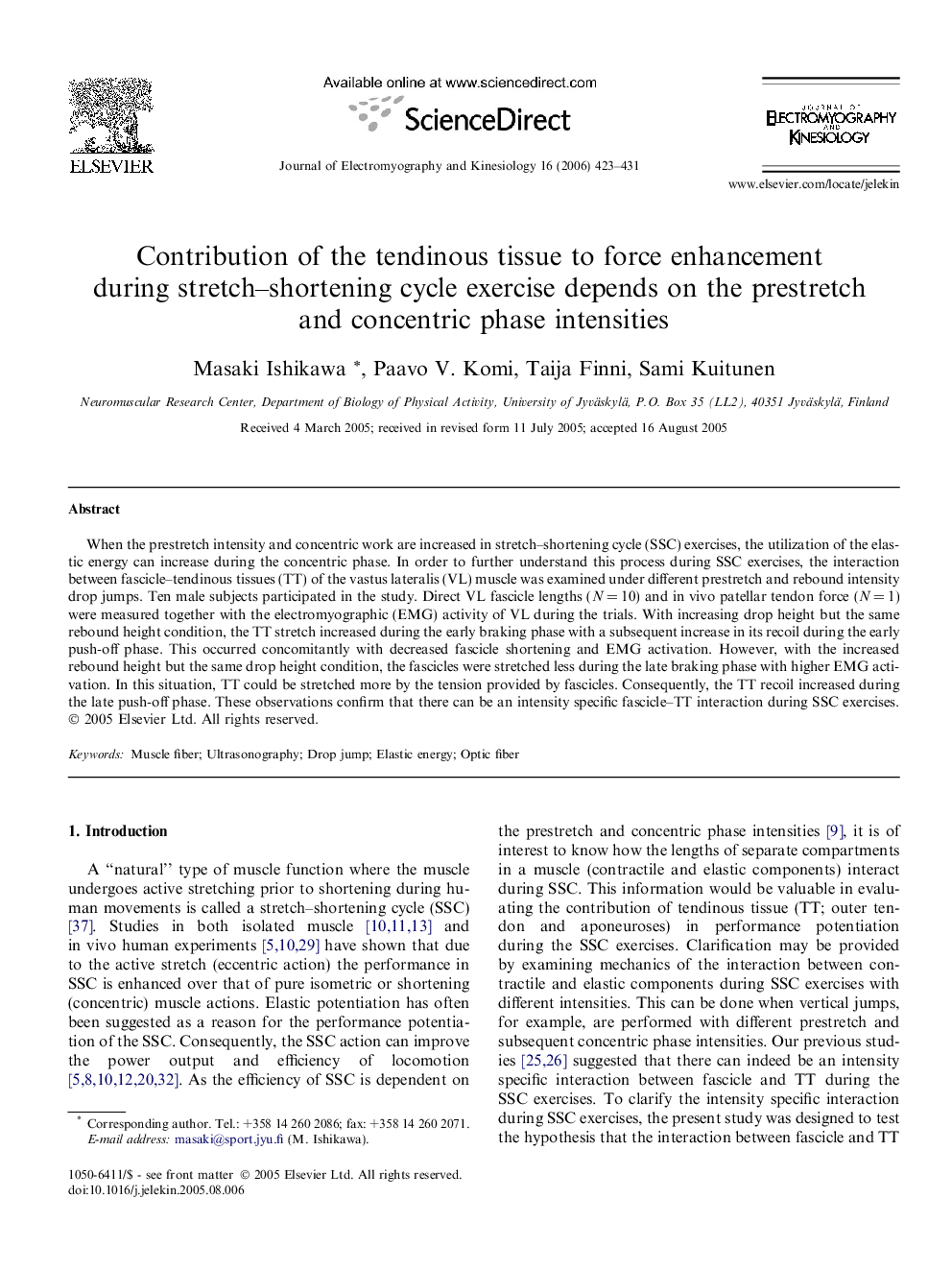| Article ID | Journal | Published Year | Pages | File Type |
|---|---|---|---|---|
| 4065605 | Journal of Electromyography and Kinesiology | 2006 | 9 Pages |
When the prestretch intensity and concentric work are increased in stretch–shortening cycle (SSC) exercises, the utilization of the elastic energy can increase during the concentric phase. In order to further understand this process during SSC exercises, the interaction between fascicle–tendinous tissues (TT) of the vastus lateralis (VL) muscle was examined under different prestretch and rebound intensity drop jumps. Ten male subjects participated in the study. Direct VL fascicle lengths (N = 10) and in vivo patellar tendon force (N = 1) were measured together with the electromyographic (EMG) activity of VL during the trials. With increasing drop height but the same rebound height condition, the TT stretch increased during the early braking phase with a subsequent increase in its recoil during the early push-off phase. This occurred concomitantly with decreased fascicle shortening and EMG activation. However, with the increased rebound height but the same drop height condition, the fascicles were stretched less during the late braking phase with higher EMG activation. In this situation, TT could be stretched more by the tension provided by fascicles. Consequently, the TT recoil increased during the late push-off phase. These observations confirm that there can be an intensity specific fascicle–TT interaction during SSC exercises.
